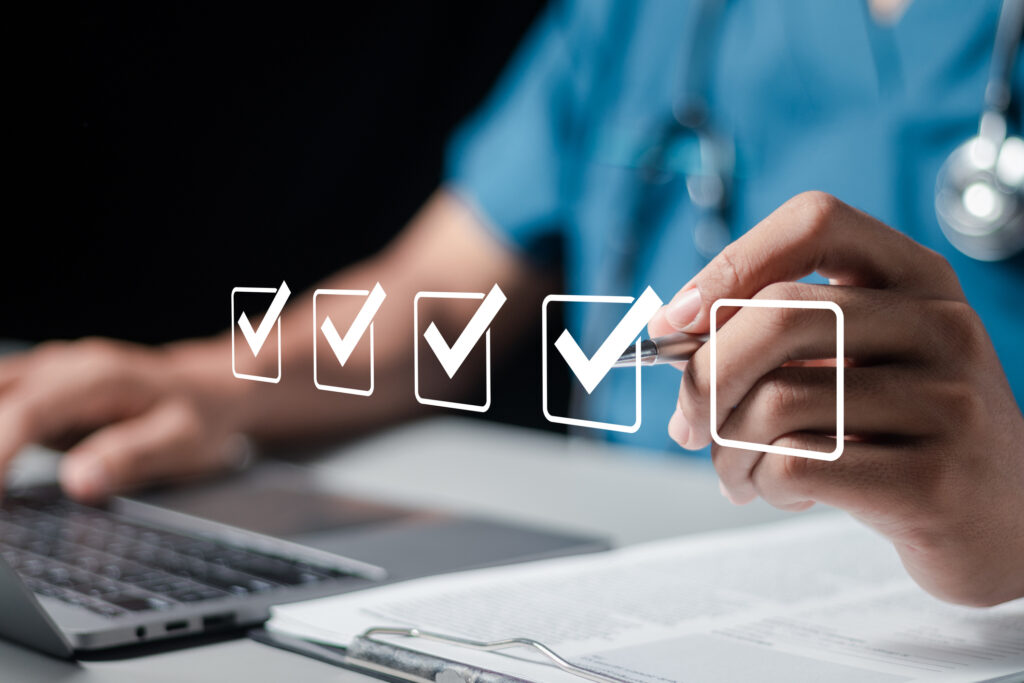When patients call their doctor’s offices, the first people to greet them are usually front desk receptionists at those practices, or nonclinical phone operators in call centers. Neither are certified medical professionals, which means that they aren’t trained to give patients feedback about diagnoses or treatment.
Some practices have implemented symptom screening tools to have nonclinical operators give patients initial health reviews before speaking with triage nurses or doctors. However, similar to self-diagnostic tools and WebMD, these symptom checkers can cause problems for providers.
Liability of Using Symptom Screening Tools
Even without symptom screening tools, practices already have their fair share of liability to navigate.
First, practices must ensure that patients have a reasonable means of getting callbacks from triage nurses regarding their symptoms. If a practice can’t provide these callbacks effectively during normal business hours, or they don’t offer this service after hours, it’s recommended that they direct patients to resources that can evaluate them.
Second, practices need to make sure that all patient-reported symptoms and interactions are documented thoroughly, especially for those times when patients may suffer negative health outcomes and want to blame the practice.
So when it comes to giving nonclinical operators symptom screening tools to advise patients, the margin for error is too great. Only nurses should be advising patients on whether their symptoms indicate that they should be seen by a healthcare provider, and only doctors should be providing diagnoses.
Practices can still empower their nonclinical operators with the best tools for gathering the information that their triage nurses will need while avoiding mistakes (see MedMessage Assist). Then those nurses can use Schmitt-Thompson triage protocols, their own knowledge, and critical thinking skills to evaluate symptoms and determine the appropriate dispositions for care.
Schmitt-Thompson Triage Protocols
Schmitt-Thompson protocols are used by practices across the United States to evaluate patient symptom severity. They anticipate the worst-case scenarios so that patients are advised to see the appropriate providers in the appropriate windows of time. This avoids negative health outcomes and undue stress on practices, and can actually save money for both doctors and patients.
At minimum, protocols are updated every year. Practices can choose daytime and/or after-hours versions, depending on the extent of their telephone triage coverage.
Triage nurses use these protocols to determine if patients are experiencing common symptoms that can be managed at home, or more severe symptoms that should be further evaluated and treated by health professionals like their primary care providers, specialists, or ER doctors.
Nurse Triage Software
Depending on the triage software that they use, nurses can then relay these patient interactions directly to their referred providers, improving continuity of care for patients and reducing liability for those practices. TriageLogic’s flagship software, myTriageChecklist, offers this kind of integration by allowing information to be loaded directly to a practice’s electronic health records, or shared as EHR-compatible files.
Whereas freestanding solutions can be difficult to implement and may experience issues with syncing data, TriageLogic’s nurse triage software is designed to avoid both and still be cost-effective. It also maintains high-level cybersecurity to protect patient data and meet HIPAA compliance.
Nurse Triage On Call
If your practice is open for normal business hours, does it also have an after-hours line for care? If not, we recommend partnering with a nurse triage call center that can answer your patient requests 24/7. This gives your patients peace of mind to have knowledgeable, skilled nurses who are able to advise them on the severity of their symptoms and determine whether they can wait to see their doctors, or whether it’s better for them to go to the ER.
This kind of coverage was exceptionally helpful during the first year of the COVID-19 pandemic, but is just as relevant to patients’ concerns today. There are numerous reasons why patients delay their own care, from concerns that they’re initially overreacting to the possible effects on their finances and insurance. Nurse Triage On Call provides reassurance by explaining what actions they should take without the uncertainty, stress, or inaccuracy of symptom screening tools and internet searches.
Don’t Rely on Symptom Screening Tools
Nurse triage is the better option for symptom assessment and symptom management. If you’d rather not outsource this service to us, we also have options for training your in-house nursing staff with the skills they’ll need to perform telephone and telehealth triage. They include a learning center of free training videos, as well as a certification course for a nominal fee.
We also maintain the most up-to-date versions of Schmitt-Thompson protocols which you can purchase from us.
Which Nurse Triage Options Do You Need?
There is a nurse triage solution that fits any practice. Whether you’re looking for ways to empower your nonclinical operators, enhance the training for your triage nurses, outsource these calls to nurses who can answer any time of day, or document those interactions thoroughly, we have the best tools, training, and software solutions available!
When you’re ready, please contact us to discuss how you can avoid medical liability with the right tools.
About TriageLogic
TriageLogic is a URAC-accredited, physician-led provider of top-quality nurse telehealth technology, remote patient monitoring, and medical call center solutions. Founded in 2007, the TriageLogic Group now serves more than 22,000 physicians and covers over 42 million lives nationwide.





